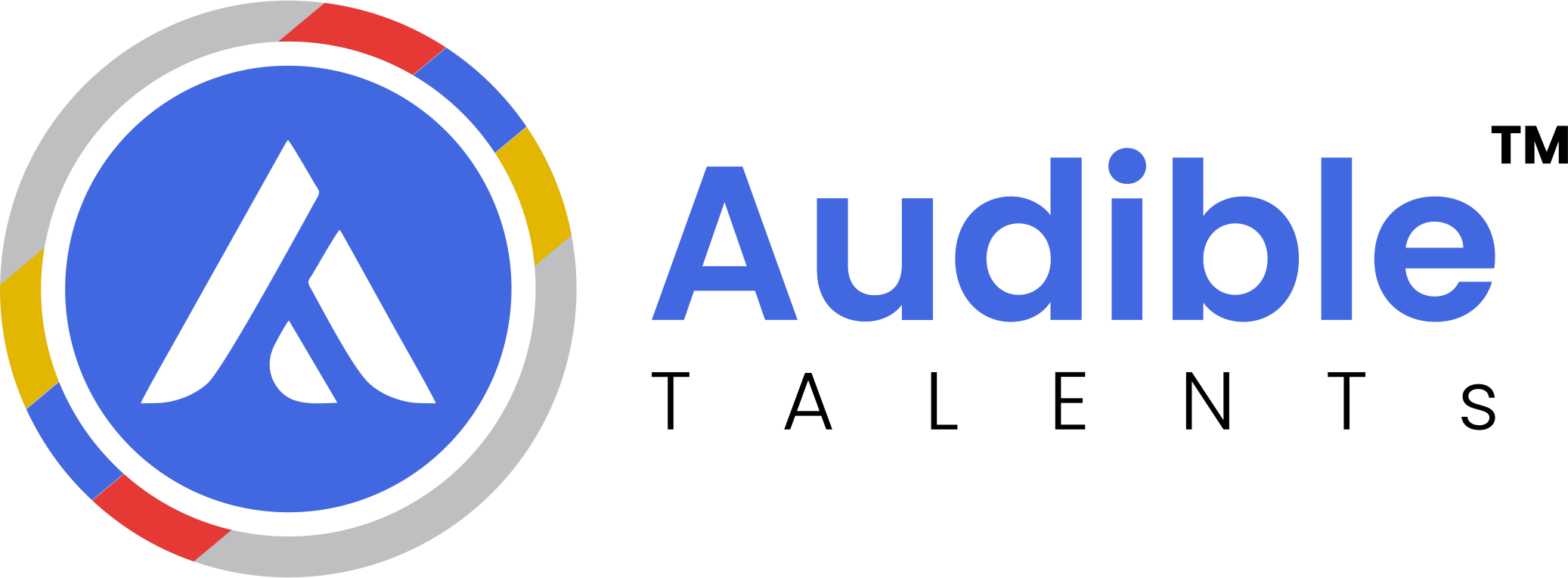
9 Key Players In the Conversational AI Industry
Disclosure
This post includes affiliate links, meaning that if you make a purchase through these links, we may earn a commission at no extra cost to you. We only recommend products and services we trust and believe will be valuable to our readers.
People often feel at ease when engaging with AI chatbots, thanks to the impressive technology behind them. These chatbots use advanced algorithms and machine learning to analyze and replicate the nuances of human conversation. By mimicking the natural flow of speech, chatbots create a sense of familiarity that makes interactions feel more personal and fluid. This ability to adapt their responses based on user input fosters a sense of connection, making conversations more engaging—especially in digital business.
Recent studies show that over 40% of small businesses use conversational AI to enhance business performance and customer engagement, marking a big change in how companies connect with and help their customers in the digital age.
How does conversational AI help in modern business success?
Conversational AI, powered by natural language processing (NLP) and machine learning, has redefined communication in business. Unlike traditional chatbots that rely on scripted responses, conversational AI tools understand context, can adapt to conversations, and provide human-like interactions. This change brings significant benefits to digital businesses.
1. Improved Customer Engagement
One major advantage is enhanced customer engagement. Customers expect immediate responses to their queries, and conversational AI ensures 24/7 availability without compromising quality. Additionally, it can efficiently manage large volumes of customer interactions.
For example, a small e-commerce store might use conversational AI to answer FAQs about shipping, refunds, or product availability. This reduces response times, improves customer satisfaction, and frees up human staff to handle complex tasks.
2. Enhanced Appointment Scheduling
Gone are the days of back-and-forth emails to confirm appointments. Tools like Make.com automate the process, allowing customers to book, reschedule, or cancel appointments seamlessly. By integrating with calendar systems, these tools eliminate scheduling conflicts and ensure a smooth booking experience.
Consider a clinic using conversational AI for patient bookings. Patients can interact with a chatbot on the clinic’s website to select suitable time slots without human intervention. This improves efficiency and enhances the patient experience.
3. Boosting Lead Generation
Generating leads is important for business growth, and conversational AI has proven to be a game-changer. By engaging potential customers through personalized interactions, these tools qualify leads and guide them through the sales funnel.
For instance, an online marketing agency could use conversational AI to interact with website visitors. The AI identifies prospect’s needs and directs them to the appropriate services or representatives by asking targeted questions, increasing conversion rates.
4. Enhancing Cold Calling
Traditional cold calling is time-consuming and often frustrating. AI tools automate initial outreach and provide tailored scripts for human agents. AI-driven systems analyze customer data to deliver personalized messages that resonate with potential clients.
For example, a SaaS company might use conversational AI for cold outreach. The AI pre-screens leads, leaving only the most promising prospects for follow-up by sales representatives. This saves time and boosts sales team efficiency.
Key Players in Modern Conversational AI
1. Make.com
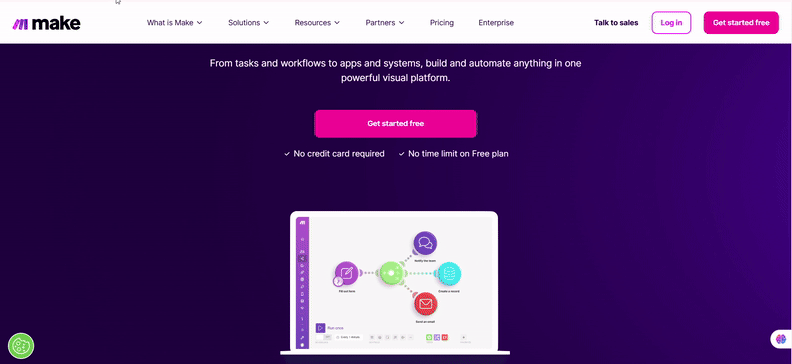
Make (formerly Integromat) provides a visual platform to connect apps through workflows called scenarios. These scenarios define how data flows between conversational AI and apps like Google Calendar, Microsoft Outlook, or booking systems.
Use cases
- A chatbot like ChatGPT receives a user’s request to schedule a meeting. Make.com triggers an action to check calendar availability and sends a confirmation back to the user.
2. ElevenLabs
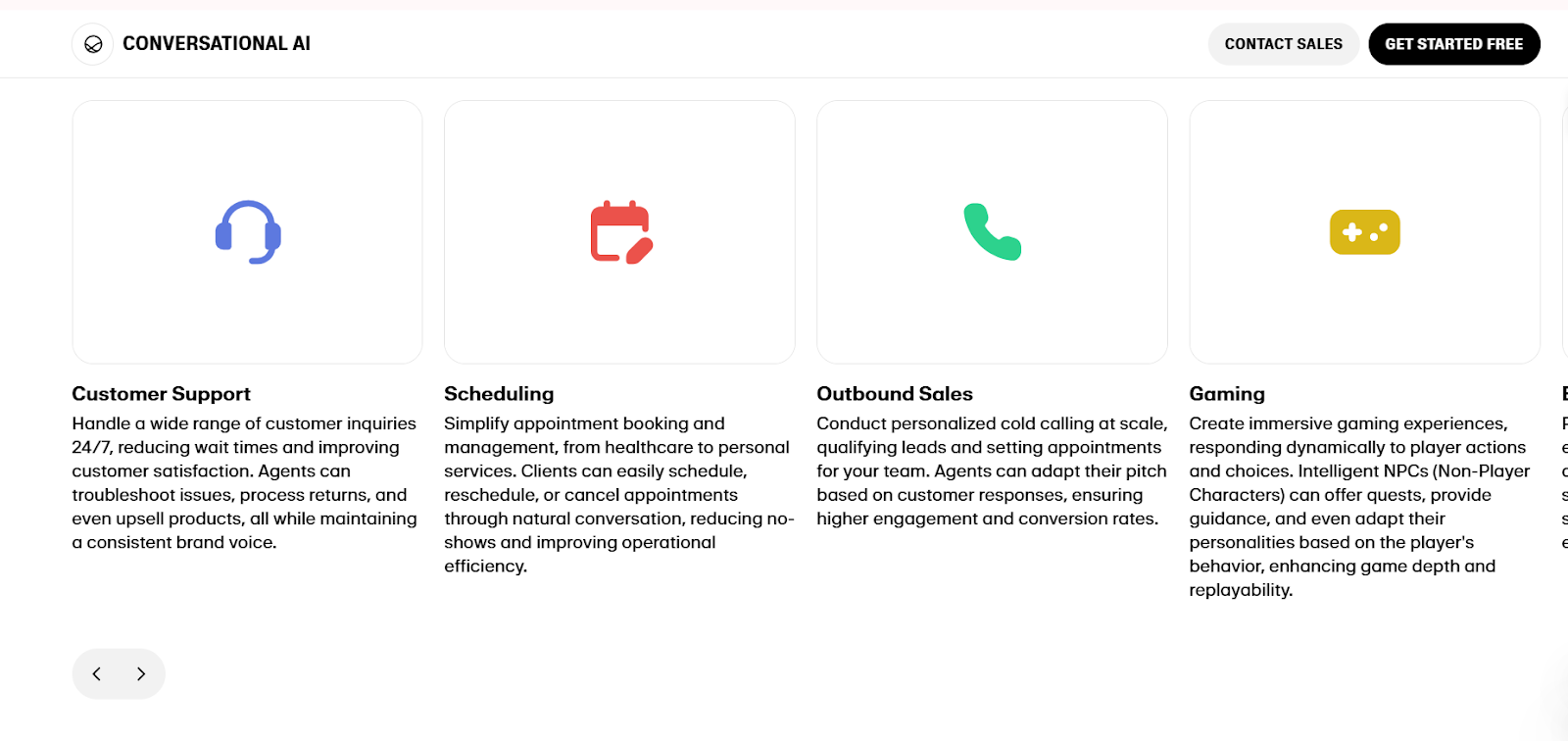
ElevenLabs is a company known for creating advanced text-to-speech (TTS) and voice synthesis technologies. Its products focus on delivering highly realistic and expressive speech capabilities. One of the key aspects of ElevenLabs’ approach is the ability to produce voice outputs that mimic human emotions and intonations, enhancing the realism of interactions in applications like audiobooks, games, and virtual assistants.
Features
- Cross-Lingual Capabilities: ElevenLabs provides support for multiple languages, allowing for global accessibility.
- Customization Options: Users can create unique voice profiles or choose from a variety of voices, making it adaptable for different audiences.
- Emotional Tone Variation: The technology can modulate voice pitch and tone to convey emotions effectively, resulting in a more engaging user experience.
Use Cases
- Audiobooks: engaging narration that maintains a listener’s interest.
- Video Games: Creating realistic character dialogues that enhance immersion.
- Virtual Assistants: Providing natural-sounding responses in customer service applications.
3. Perspective AI
Perspective AI, developed by Jigsaw, a subsidiary of Google, is designed to improve online conversations by analyzing text and providing feedback on its potential toxicity. It employs machine learning algorithms to assess comment sections on platforms and gauge the likelihood of a comment being interpreted as toxic, aggressive, or off-putting. This tool aims to foster healthier online discussions by alerting users about their language and suggesting more constructive alternatives.
Features
- Real-Time Feedback: As users type, the system evaluates their language and provides an instant toxicity score, allowing individuals to adjust their comments accordingly.
- Contextual Understanding: Perspective uses NLP to grasp the context of a conversation, ensuring that feedback is relevant to the specific dialogue.
Use Cases:
- Moderation Tools: Assist platforms in managing comments to promote positive interaction.
- Educational Purposes: helping users refine their communication skills by providing constructive feedback.
4. ChatGPT
ChatGPT, developed by OpenAI, is a state-of-the-art conversational agent that leverages the GPT (Generative Pre-trained Transformer) architecture. It’s designed to understand and generate human-like text based on the input it receives. ChatGPT is versatile and capable of engaging in various discussions, answering questions, providing creative writing assistance, and more. Businesses can integrate ChatGPT into their websites or apps to provide personalized customer experiences.
Features
- Contextual Awareness: ChatGPT can maintain context through multi-turn conversations, allowing for coherent and relevant exchanges.
- Adaptability: It can be used in diverse applications, from customer support to personal assistants and educational tools.
- Continuous Learning: ChatGPT models are fine-tuned with user feedback, helping them improve over time.
Use Cases
- Customer Service: Automating responses to frequently asked questions, enhancing efficiency for businesses.
- Creative Writing: Assisting authors with brainstorming ideas, structuring narratives, and generating dialogue.
- Education: Providing explanations, tutoring, and answering students’ inquiries in various subjects.
5. Microsoft Azure Bot Service

Microsoft Azure offers a comprehensive platform for building, deploying, and managing bots. The Azure Bot Service integrates with various channels like Microsoft Teams, Skype, and Facebook Messenger, allowing developers to create conversational agents that leverage Microsoft’s backend AI capabilities.
Use Cases
- Customer support, information retrieval, and virtual personal assistants.
6. Jasper AI
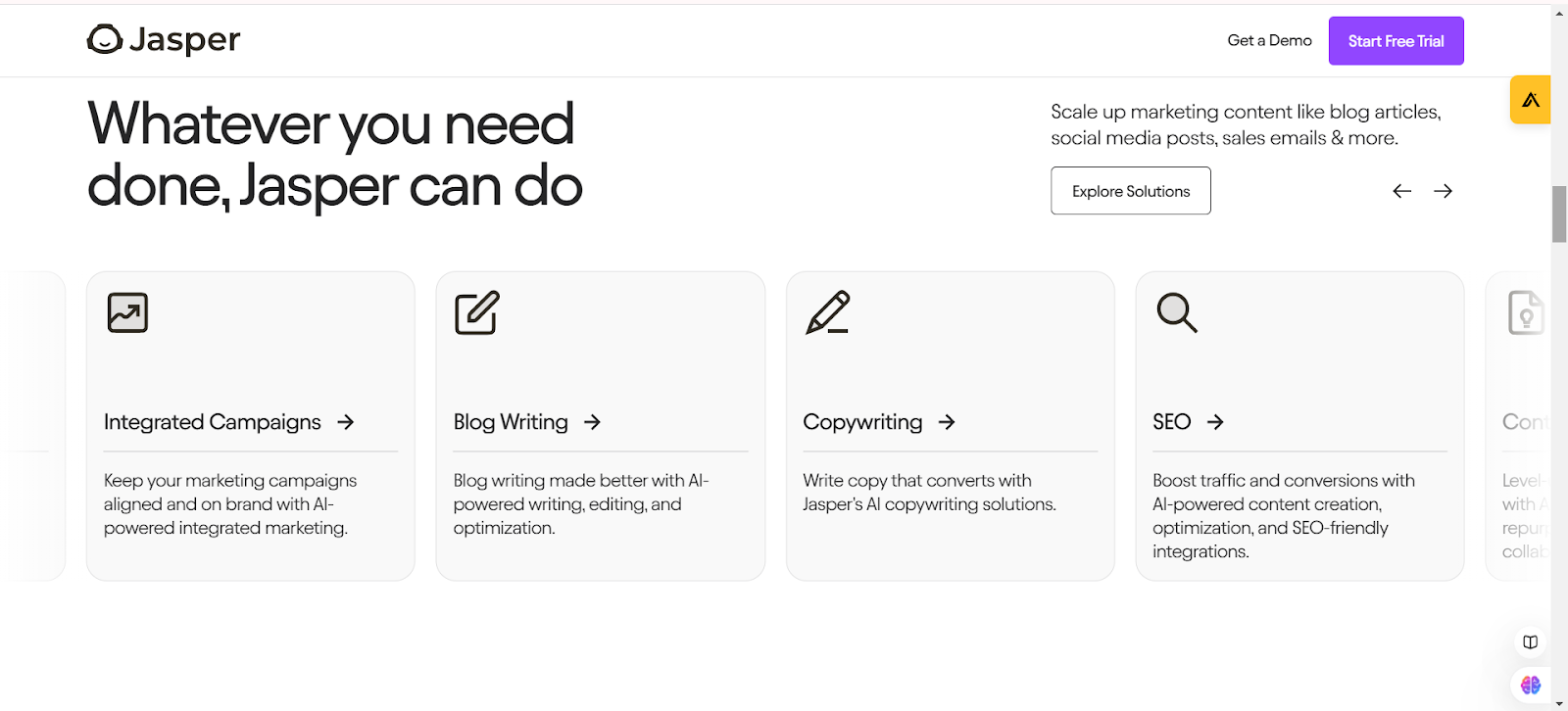
Jasper is an AI content creation tool designed to help marketers and writers generate high-quality written content quickly. It uses NLP to craft blog posts, articles, and marketing copy and can also assist with creative writing and content ideas.
7. Google Dialogflow
Google Dialogflow provides a platform for developing conversational applications that can be used with various interfaces, including voice commands. It allows developers to create chatbots that can understand and respond to complex queries while integrating seamlessly with Google Assistant.
Use Cases
- Chatbots for customer service, virtual agents, and interactive voice response (IVR) systems.
8. IBM Watson Assistant
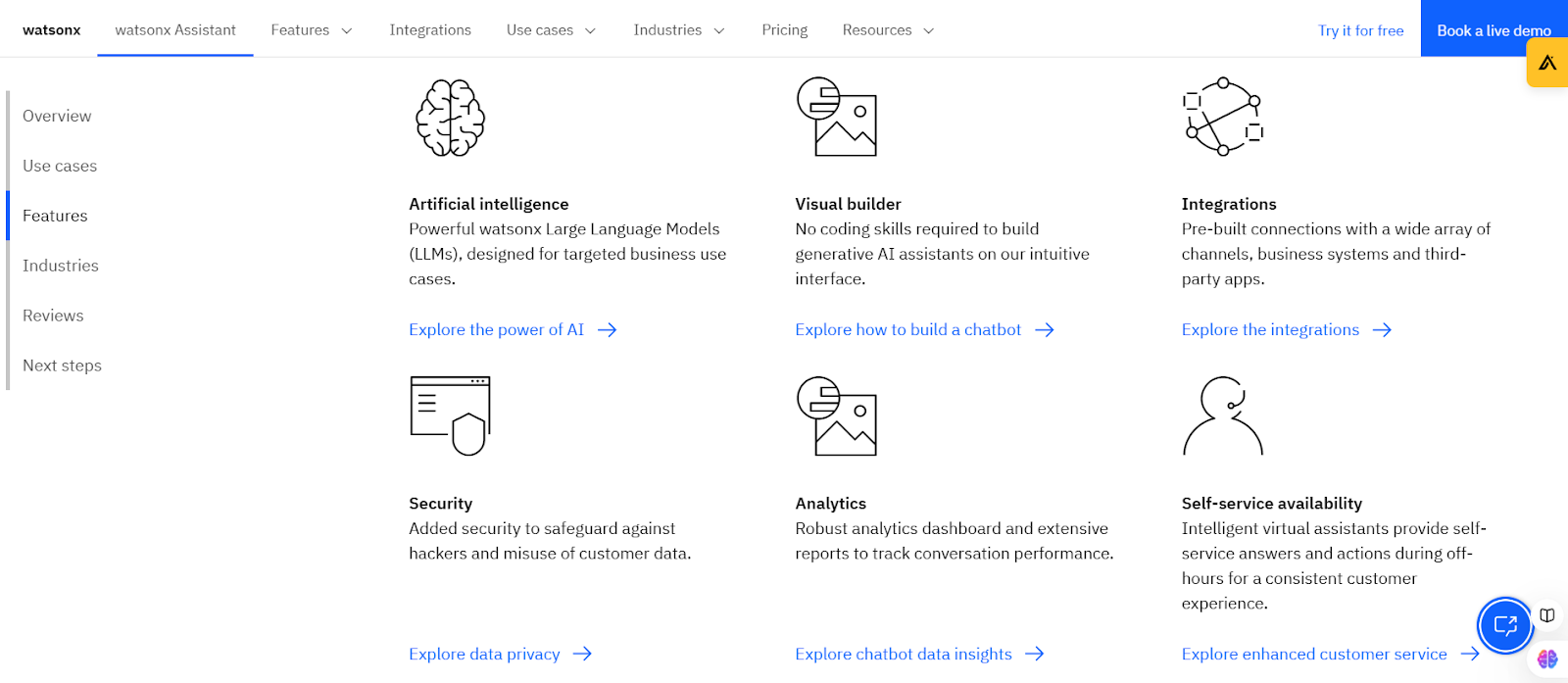
IBM Watson Assistant is an AI platform that enables developers to build conversational interfaces. It features advanced NLP capabilities, allowing it to understand user intent and provide contextually relevant answers across various platforms.
Use Cases
- Customer engagement solutions and business process automation.
9. Descript AI
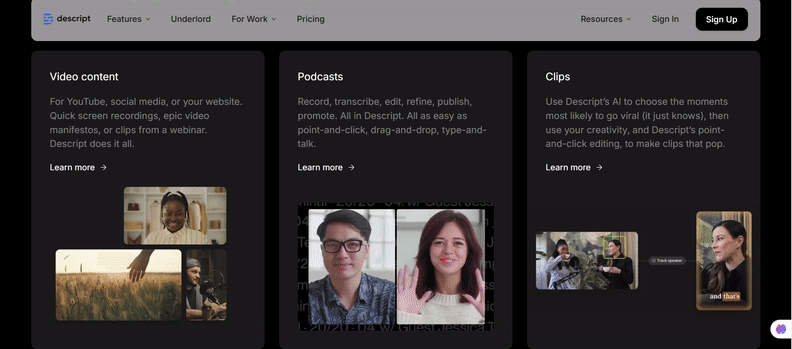
An audio and video editing software with advanced transcription and voice synthesis capabilities. Descript uses AI to create voice-over content, allowing users to create videos with realistic voiceovers simply by editing text.
Use Cases:
Podcast production, video editing, and creating educational content.
As these tools continue to replace routine tasks in customer service, appointment scheduling, and lead generation, the question remains, What does this mean for human workers?
Will Conversational AI Take Your Job?
Conversational AI will continuously develop to impact the way businesses work by automating tasks like appointment scheduling and lead generation. While this saves money and boosts efficiency, many still ask, Will my job disappear?
Jobs like customer service and virtual assistance are most affected because AI can handle tasks faster and cheaper.
But it’s not all bad news. You can stay valuable by learning new skills, like how to use or manage AI tools. Jobs that need creativity, problem-solving, and human connection—things AI can’t do—will always be in demand.
The key is to adapt. Instead of fearing AI, focus on learning and growing so you can take on tasks that only humans can do.
Conclusion
Conversational AI is driving business growth by automating routine tasks and improving efficiency. But as AI takes over repetitive work, the demand for uniquely human skills—like creativity, problem-solving, and emotional intelligence—becomes more important.
For professionals, this is a chance to upskill and take on more meaningful roles. By adapting to these changes, both businesses and individuals can unlock new opportunities in the age of AI.
